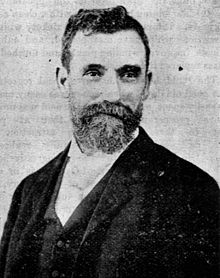30 Lady Mary Terrace, Gympie
This article, 30 Lady Mary Terrace, Gympie, has recently been created via the Articles for creation process. Please check to see if the reviewer has accidentally left this template after accepting the draft and take appropriate action as necessary.
Reviewer tools: Inform author |
 Comment: This draft has been abandoned by an editor who has been inactive for more than a year, but review of this draft appears to be in order.This will be subject to deletion six months after it is last edited by a human.Since the author of this draft is inactive, any comments may be addressed to the last reviewer.This should be assessed according to building notability guidelines or place notability guidelines. Robert McClenon (talk) 12:25, 18 January 2019 (UTC)
Comment: This draft has been abandoned by an editor who has been inactive for more than a year, but review of this draft appears to be in order.This will be subject to deletion six months after it is last edited by a human.Since the author of this draft is inactive, any comments may be addressed to the last reviewer.This should be assessed according to building notability guidelines or place notability guidelines. Robert McClenon (talk) 12:25, 18 January 2019 (UTC)
30 Lady Mary Terrace, Gympie was originally owned by William Caldry who accumulated his wealth through mining ventures. At this stage it was a vacant block of land and was sold to William Smyth (also Smythe) in 1882.[1] The house and landscaped gardens were built around 1882 by William Smyth.

Owner and builder

William was amongst the early prospectors who came to the Gympie gold fields, arriving in March 1868. He was a charismatic man who was very involved in the community. He had interests in many mines, was mine manager of a number of mines and joint owner or shareholder of several. He began his public career in February 1882 when he was elected as an Alderman of the Municipality and then as Mayor of Gympie the following year. He resigned from this position in January 1884 owing to having been elected as the representative for Gympie in the Legislative Assembly of Queensland in September, 1883. He held the position of being the mining authority in the parliament until the end of his political career. He became known as ‘Bill the Miner’ and was outspoken in his defense of miner’s issues. William Smyth was one of the leading people in the foundation of the Miners’ Institute at the One Mile and was the first President of the Amalgamated Miners’ Association. William also made contributions to many community organizations through donation of funds. At the time of his death in 1899 he was a member of many community organizations around Gympie, including the School of Arts, the hospital and the Agricultural Society and a director of about a dozen mines and other utilities.
Subsequent use
William died without having any children and after his death Dr Alexander Nichol took over the house as his surgery and home in 1906. Dr Nichol also provided some accommodation for private patients. After Dr Nichols death various other doctors resided there. In 1922, Dr Kelly became the occupier. During the WW2 conflict he lost both his sons and left the practice in February 1944 after selling it to Dr Lindsay. While Dr Lindsay was in England furthering his medical studies Dr Kesteven took on the practice until Dr Lindsay’s return when he then moved to Mellor St. Following Dr Lindsay’s death his son, William, practiced in the surgery until he set up practice on the Sunshine Coast. Following Dr William Lindsay Dr Cairncross took on the practice and remained there until the late 1990’s. The building was then bought and used as a private residence until 2009[citation needed] when Choice Support Services bought the building, renovated it and used it as a community centre to provide services for people with mental health issues.[2]
The historic building was destroyed by fire on the 22 May 2012.[3]
See also
References
- ^ (24 May 2012). In former glory for a short time. Gympie Times. Retrieved on 25 May 2012.
- ^ (3 October 2008). Mental health grant boost. Gympie Times. Retrieved on 25 May 2012.
- ^ Lee Gailer (24 May 2012). Help flows in for support service. Gympie Times. Retrieved on 25 May 2012.
Category:Articles created via the Article Wizard Category:Buildings and structures in Queensland Category:Residential buildings in Australia

